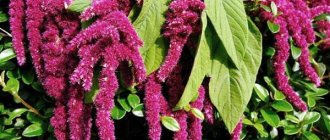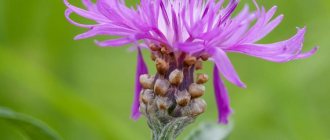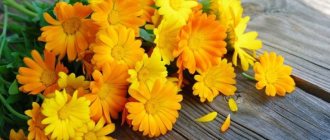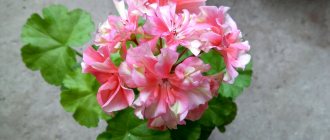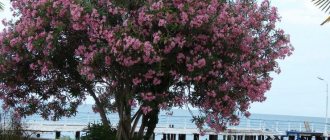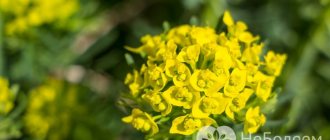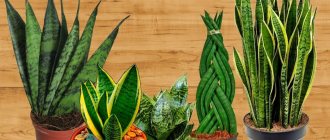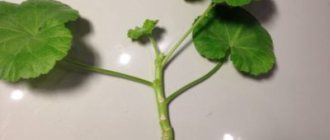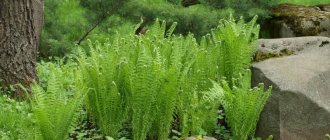People grow everything that is beautiful and also useful. Amaranth was one of these plants. In its unchanged form, it is a weed called upturned acorn. Every gardener has at least once encountered so-called “soldiers” in his garden plot; these are nothing more than amaranth. Today, breeders have developed a great variety of varieties and types of amaranth. They attract attention with their beauty and unusualness, and besides, this plant is useful and fruitfully used in cooking. What kind of unique species is this and what species are known today.
Brief information and cultural features
Amaranth belongs to the Amaranthaceae family. The plant, regardless of the species, is drought-resistant and unpretentious. The culture has the following characteristics:
- Plant height can vary from 30 cm to 3 meters.
- During the flowering period, the bushes are covered with red, burgundy or green inflorescences. The flowers are collected in dense spikes.
- The leaves can reach a length of 20 cm. The color of the leaf blade is varied, from light green to burgundy. Particularly popular are tricolor plants with variegated leaf colors.
- The seeds and leaves contain a large amount of protein, so they are used as food.
The leaves and grains contain large amounts of protein needed by both humans and animals.
Benefit
Amaranth, a plant whose photo you will see below, is considered a very useful product. You can find many useful substances in its composition. It is thanks to its rich composition that amaranth seeds should be included in your diet. In addition, amaranth seeds contain a lot of protein (as much as chicken). Back in 1980, a study was conducted in Peru, during which it became known that amaranth can be used as a main component of children's diets.
Consumption of amaranth as food will allow cells and tissues to develop and grow. Amaranth grains will saturate the body with energy and improve metabolism. In addition, not so long ago, in 2008, lunasin was found in amaranth. It is an anti-cancer substance that also eliminates inflammation in various chronic diseases, namely gout and arthritis. Lunasin in amaranth helps cure cardiac diseases, protect the body from diabetes and stroke.
Regular use of amaranth can reduce “bad” cholesterol and cure cardiovascular diseases. In addition, amaranth can help people with hypertension and coronary heart disease. Thanks to the calcium in its composition, amaranth is considered an excellent remedy for the prevention of osteoporosis and an excellent means for strengthening bone tissue. Also, amaranth greens prevent bone demineralization, which means it improves human health and relieves joint pain, strengthening bones.
Fiber in amaranth has a positive effect on the functioning of the gastrointestinal tract and intestines, and flavonoids in amaranth prevent varicose veins and strengthen capillary walls. Amaranth is good for vision, as it slows down and sometimes stops the development of cataracts and restores visual acuity.
Table of types and varieties of amaranth
There are 4 main types of amaranth: fodder, grain, vegetable and ornamental. Each species includes several varieties. Let's look at each variety in more detail.
| View | Varieties |
| Stern | Aztec, Giant, Lera, Amber, Kizlyarets |
| Vegetable | Valentina, Krepysh, Opopeo, White Leaf (white), In Memory of Kovas |
| Grain | Kharkovsky, Helios, Ultra, Universal, Voronezh |
| Decorative | Dark, Tricolor, Paniculate, Tailed |
Varieties of forage amaranth
The variety is used for animal feed. The leaves, inflorescences and roots of the crop are valuable. The plant is grown in large quantities by agricultural organizations and used as a nutritional supplement.
Aztec
The plant can reach a height of up to 1.5 m. It is used to feed cattle and pigs. The leaves are long, green with red splashes. During the flowering period it is covered with large panicles, red or burgundy in color.
Features of the variety:
- is not afraid of spring frosts, so it can be planted in open ground in early spring;
- the seeds can be used to make oil;
- The plant matures completely in 4 months.
If the plant is planted in the ground at the end of May, you can get an abundance of leaves for food. To collect seeds in the southern regions, amaranth is planted no later than May 5. For the northern regions, it is recommended to plant in seedlings after May 15. Otherwise, the seeds will not have time to fully ripen.
Giant
The plant is large in size and reaches a height of 2 m. It can be used not only for feeding animals, but also for obtaining grain. The leaves are green and can reach a length of 20 cm. During the flowering period it is covered with yellow or burgundy inflorescences.
Features of the variety:
- the leaves are juicy and can be used both for making silage and for fresh consumption;
- seeds with a fat content of 8%;
- bushes with lush leaf cover.
The variety is immune to blackleg and withstands drought well, so it is very often chosen for sowing in fields.
Lera
A tall plant can reach a height of up to 2.5 m. Leaves are up to 20 cm long. The leaf blade is juicy, bright green. The inflorescences are green and become deep crimson when ripe.
Features of the variety:
- used to obtain oil and amaranth flour;
- seeds 7% fat;
- When the plant is grown on the sunny side, burgundy veins appear on the leaves.
The inflorescences are dense and resistant to shedding. Therefore, after full ripening, this variety has only 3% seed loss.
Amber
The bushes are 1.5 m high. The leaves reach 10-15 cm in length. The bush is compact, but with a large number of branches. Most often, the Yantar variety is used for additional feeding of cattle.
Features of the variety:
- the panicle consists of a large number of small inflorescences collected into separate ears;
- after ripening, the inflorescences acquire a rich orange color;
- high resistance to drought.
Amaranth can grow on loamy and sandy soil, but its yield is not reduced.
Kizlyarets
The plant is intended for fresh cutting. The height of the bushes is 1.5 m. The leaves are green with a rough surface. The inflorescences are loose and red. Grows on all types of soil.
Features of the variety:
- not used for winter storage;
- high green yield 80 c/ha;
- fast ripening period, only 80 days after planting the seeds in open ground.
The plant is universal and suitable for all types of animals.
Care
At first, amaranth grows slowly, but as nutrients accumulate, the plant’s development accelerates. It is easier to care for a flower than for other inhabitants of the garden.
Watering
The flower tolerates dry weather well, but still do not forget to water it on particularly hot days. It is better to do this in the evening hours. After the amaranth has grown enough greenery, watering can practically be stopped.
Top dressing
During the season, 3-4 feedings are carried out with special complex fertilizers or a mixture of mullein and ash. When consuming flower leaves as food, do not overuse nitrogen fertilizers.
Weeding and weed removal
Amaranth is a green manure, so weeds practically do not grow around the flower. Occasionally appearing weeds can be pulled out and the bed can be weeded at the same time. Frequent weeding is done during the period of active growth. It will be helpful to mulch the soil around the stem to retain heat and moisture.
Pinching
You can increase the yield of this unique crop by pinching the top. This procedure will stimulate the growth of side shoots and ensure a good harvest.
Recently, amaranth has become very popular all over the world due to its large number of useful properties, versatility in use and unpretentiousness. You can even grow it at home without devoting a lot of effort and time to it. Thanks to its easy care and endurance, the crop will supply gardeners with useful substances for a long time.
Vegetable
A universal type of amaranth. Can be used both to decorate the area and for consumption. The culture has high nutritional value and is undemanding to care.
Valentina
A vegetable variety that is used for making salads and teas. Plant height is 1.7 m. Inflorescences are burgundy, 10 cm long. Leaves are purple, about 15 cm long.
Features of culture:
- leaves contain vitamin C and carotene;
- seed yield is low - 500-600 grams per m².
A plant with a short ripening period - only 45 days, therefore it is often grown in summer cottages.
Valentina variety amaranth is used as a food supplement for cases of deficiency of nutrients in the body.
Sturdy
Small compact bushes up to 1.3 m high. The plant has a compact appearance and is distinguished by the juiciness of its leaves. The leaves are ellipsoidal in shape and can reach a length of up to 20-25 cm. The plate is rich green in color. The plant is used to prepare salads and soups.
Features of the variety:
- undemanding to watering, since the root system is well developed and penetrates deep into the soil, extracting water independently;
- the ripening period is 70-80 days;
- from 1 m² you can collect up to 3 kg of seeds.
The inflorescences are green at the beginning of flowering, but as the seeds ripen they become brown.
Opopeo
An edible variety that is often grown in summer cottages. The height of the bush is up to 1.5 m. The leaves are large, up to 20 cm, rich green in color. The inflorescences are green; when the seeds ripen, they acquire a red tint.
Features of the variety:
- leaves with high taste characteristics, used for preparing salads;
- ripening speed is from 40 to 70 days from planting.
Contains a large amount of vitamin C and is used to prevent colds.
White list
Unlike other varieties, this species can be used for growing indoors. The height of the bush is 15-20 cm. The leaves are 5-10 cm long, light green. The inflorescences are white, collected in a loose panicle. Provides a source of nutritious greens throughout the year.
In memory of Covas
A small plant that can reach a height of 1 m. The leaves are 15-20 cm, light green in color, have good taste, suitable for consumption both fresh and after heat treatment. Seed yield is 4 kg per 1 m².
Features of the variety:
- high resistance to drought;
- immunity before blackleg disease.
In order to increase the number of leaves, the plant must be pinched after reaching a height of 30 cm.
How to use
Those who like to experiment in the kitchen can rejoice - it is easy to prepare many healthy and tasty dishes from ashiritsa. All elements of the plant are eaten, from the stem to the seeds. The grains are used to make baked goods and drinks, and they are added to soups and porridges.
Amaranth porridge
The leaves can be canned, steamed or fried. In Asia, fresh herbs are added to meat and fish, and it has also become a popular ingredient in salads. In Greece, they like to eat amaranth greens with lemon juice and olive oil - this side dish is ideal for fish dishes. In Chinese folk medicine, amaranth seeds are used especially actively - with their help they fight tumors and try to preserve youth.
Baking made from amaranth flour is rich in magnesium, phosphorus, calcium and vitamins PP and C. In addition, it does not contain gluten, so patients with celiac disease are allowed to eat amaranth dishes.
Cookies made from amaranth flour
If you want to cook something unusual, use one of the following options:
- Make popcorn in the microwave. In terms of taste, it is in no way inferior to a delicacy made from corn, but at the same time it is healthier.
- Prepare your own flour by grinding the grains in a blender. You can use it to bake fragrant buns, waffles, muffins and cookies.
- Try squeezing the oil out of the seeds. It is used in food - for example, for frying or for dressing salads.
- Make a delicious and healthy salad. Briefly pour boiling water over nettles and amaranth (200 g each), drain the water, and chop the leaves. Add 50 g of chopped wild garlic and a few finely chopped boiled eggs. Vegetable oil, sour cream or mayonnaise are suitable as a dressing.
In addition, the oil is known for its remarkable regenerating properties, so it can be used to treat damaged skin. The product is recommended for use after burns and insect bites. The use of amaranth for cosmetological purposes is popular. Judging by the reviews, the oil is effective in the fight against acne. Just add a little to the water before taking a bath and your skin care will be a great pleasure. It is recommended to pour two liters of boiling water over 350 g of ashiritsa and let it brew for a while.
For skin
If you want to prepare a mask that is ideal for any skin type, take 1 tbsp. l. flour and 2 tbsp. l. sour cream. The mixture must be kept for 20 minutes. Apply it to your face and neck, leave for half an hour, and then rinse with warm water.
For hair
It is also easy to prepare a decoction for rinsing. You will need 3 tbsp. l. crushed dry and fresh leaves. The collection must be poured into 1 liter of boiling water and left in a thermos for a day. Before use, dilute the product with water in a 1:1 ratio. It is recommended to do such rinses twice a week after washing your hair.
Decoction for gastrointestinal diseases
You can make a decoction from amaranth that effectively combats gastrointestinal problems. To do this, brew dry leaves (15 g) with boiling water (200 ml). The liquid must be placed in a water bath and boiled for 30 minutes. Let the mixture cool and then strain it. It is recommended to take this remedy twice a day in a small amount. To feel the result without harming the body, a third of a glass is enough.
A remedy for patients with diabetes and gastritis
Prepare juice from fresh leaves. To do this, grind them using a blender or juicer, and then mix with cream in a 1:1 ratio. Take a tablespoon three times a day after meals.
For a cold
Amaranth is actively used in folk medicine. The oil can be used as a gargle up to five times a day. To relieve discomfort, it is recommended to pour 1 tsp into a glass of water. facilities. In addition, to strengthen the immune system, add the leaves of the plant to tea. There are several more recipes with amaranth here.
For severe pain during menstruation
You need to pour 200 ml of boiling water into 1 tbsp. l. herbs and let it brew for an hour. It is recommended to drink in small sips until the painful sensations begin to subside.
To remove toxins from the body
To prepare a mixture that will quickly and effectively remove all harmful substances from the body, you will need:
- amaranth;
- Birch buds;
- chamomile;
- St. John's wort.
The collection (2 tablespoons) must be brewed with boiling water (500 ml), and then wait until the composition infuses for three hours. Before taking the product, do not forget to strain it. You can add 1 tsp. honey Drink a glass of slightly warmed liquid twice a day. It is recommended to drink the decoction before breakfast and before bed. This remedy is also suitable for people with chronic fatigue syndrome.
Grain
A variety of amaranth that is grown for its grain. Amaranth oil is produced from the seeds, which is of high value.
Kharkovsky
The variety is very popular among summer residents. By growing a plant, you can simultaneously obtain both a forage species and a grain crop. The bushes are tall up to 2.5 m. The leaves are oblong 25 cm in length. The inflorescences are dense yellow, but become burgundy as they mature.
Features of the variety:
- yield 5 kg per m²;
- used both for animal feed and for grain production;
- used in medicine.
If you do not harvest the seeds in a timely manner, they will fall off. The suitable period for collection is the end of August.
Helios
The tall plant has good yield - 25-30 centners of grain can be collected from 1 hectare. The leaves are large and succulent, so the plant is often used to make silage for animals. The height of the bush is 1.8 m. The panicles are dense orange. Features of the variety include high resistance to drought.
Ultra
Grain amaranth has a decorative appearance and is valued for its high yield. The height of an adult plant is 2 - 2.5 m. The inflorescences are up to 30 cm long, yellow in color. The leaves are green with white veins.
Features of the variety:
- grains contain more than 10% fat;
- grain products are used to prepare flour;
- The crop is vulnerable and allows harvesting 70 days after planting.
Amaranth leaves are used to prepare medicinal tinctures against blood vessel diseases.
Station wagon
The variety is easy to care for. It is grown not only for grain, but also for animal feed. The height of the bush is up to 1.2 m. The leaves are large, rich green. The average yield is 20 centners per hectare.
Voronezh
The plant matures 80 days after sowing. Height is 1 m, inflorescence size is 60 cm. The average plant yield is 35 centners per 1 ha. The seeds contain 7% fat and are therefore often used to make oil and for pharmaceutical purposes.
Features of the variety:
- grains are suitable for making flour;
- grows even in dry regions.
The variety can be grown on loamy and sandy soils. Gives a good harvest regardless of weather conditions.
Decorative
This type of amaranth has attractive external characteristics. Often used to decorate garden plots and flower beds.
Dark
It got its name due to its burgundy leaves and dark inflorescences. It looks good both as a stand-alone flowerbed decoration and in combination with other plants.
- Amaranthus hypochondriacus . The height of the bush is 1 m. The leaves are small, pointed, green with burgundy splashes. The inflorescences are dark red, collected in a dense panicle. Can be grown on any type of soil and tolerates drought well.
- Pygmy Torch . A low plant up to 70 cm. Elongated leaves, up to 15 cm long. Inflorescences of a rich crimson color in the shape of ears. Looks good in combination with low-growing decorative flowers, such as carnations or petunias.
- Green Thumb . The low-growing plant is distinguished by the rich green color of its leaves and inflorescences. Used to decorate garden paths or flower beds. Also often used to decorate bouquets.
- Amaranth Princess Feather . A tall plant that can be used not only for decoration, but also for grain production. The height of the bushes is 1.7 m. The average yield is 15 centners per 1 ha. The leaves are burgundy, elongated. Red candle-shaped inflorescences.
Tricolor
A feature of the species is the multi-colored leaves, the color of which becomes more saturated during the period of growth of the bush.
- Flaming Fountains . The height of the bush is 1 m. The leaves are drooping, oblong in shape. A special feature is the unusual color of the leaf plate, which combines red, burgundy and green shades. Has high resistance to drought.
- Illumination . A low-growing crop with a height of no more than 40 cm. The leaves are elongated, reaching up to 20 cm in length. The upper part of the bush is colored red and pink. The lower leaves are brown. The shade of the leaf blades changes as the crop grows.
- Perfection . A popular variety that is distinguished by the brightness of its leaves. The height of the bush is 45-50 cm, the leaves are thin, elongated, 20 cm long. The leaf plate is painted in bright red, yellow and green. The leaves acquire the greatest brightness if the bush is grown in a sunny area.
- Fabulous . A spreading bush 40 cm high. The leaves are colored red and pink. Gradually the leaf blade becomes brown or burgundy. The inflorescences are small red.
- Molten Fire . The culture is distinguished by brown-burgundy leaves and rich crimson inflorescences. Looks ideal both in the garden and in decorating bouquets. However, the plant is very demanding of care. When growing amaranth, it is necessary to water it in a timely manner and protect the bush from drafts.
Paniculate
A variety with dark leaves, most often brown. The panicle is well developed, directed upward, but the apex is turned to the side.
- Zwergfackel . A low-growing variety that is often used as a decoration along the border. The height of the bush is 30 cm. The leaves are brown and oblong. The inflorescences are lush, turned to the side.
- Hot Biscuit . Height 1-1.2 m. Leaves are elongated, green. The inflorescences are collected in a dense panicle, which is painted golden. The inflorescences ripen at the end of September, so the crop will decorate the garden plot throughout the summer.
- Miniature torch . A spectacular plant with a height of only 35 cm. The leaves are round and green. The length of the leaf blade is 15 cm. The inflorescences are torch-shaped, painted cherry or burgundy. Amaranth is very popular in creating unique garden compositions.
- Red Spire . The leaves are red, the leaf blade is glossy, so the bush stands out significantly among other plants. The inflorescences are bright red, collected in a loose panicle.
- Oeschberg . Bush up to 1 m high, leaves are light green. Particular attention is drawn to the bright red inflorescences, which are collected in thin spikes. This variety is often used to decorate parks and looks good in bouquets.
Caudate
The culture is characterized by underdeveloped branches. A distinctive feature of the species is its dense hanging panicles.
- Grünschwanz . The plant is 80 cm high. The leaves are small and matte. The variety is especially attractive due to its hanging panicles, which can reach a length of 20 cm. The plant is undemanding in care and easily tolerates changing weather conditions.
- Rotschwanz . The height of the bush is 70 cm. The leaves are matte, green, with carved edges. The inflorescences are loose, collected in small spikes of crimson color. The length of the ears is 30 cm.
- Emerald . Only 60 cm high, elongated leaves can reach 15 cm. The panicles are lush and light green. This variety requires regular watering and grows well only in sunny areas.
- Red . It is considered one of the most common varieties. The height is only 70 cm, the leaves are small, 10 cm long. The inflorescences are very bright, collected in hanging ears. During the flowering period, the bush is covered with ruby inflorescences, which turn brown as the seeds ripen.
- Raspberry beads . The variety received its name due to its hanging crimson-colored inflorescences. The length of the inflorescences is 20-25 cm. The bush is of medium size, up to 70 cm high. It looks attractive not only in the garden, but also in bouquets.
Amaranth is a popular plant that acts not only as an ornamental crop, but is also used in cooking and medicine. In order to choose the right amaranth variety for planting, you need to know what types exist and how they differ.
